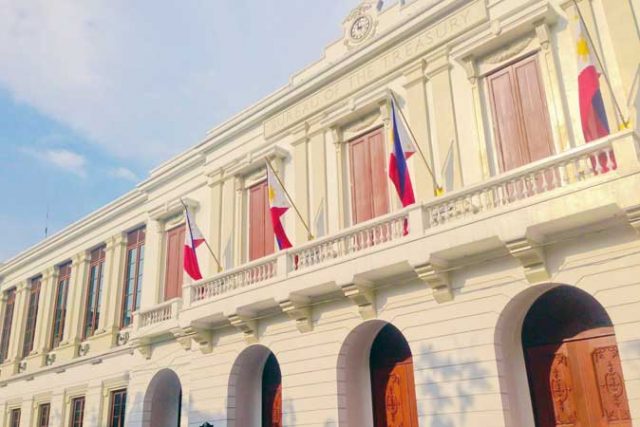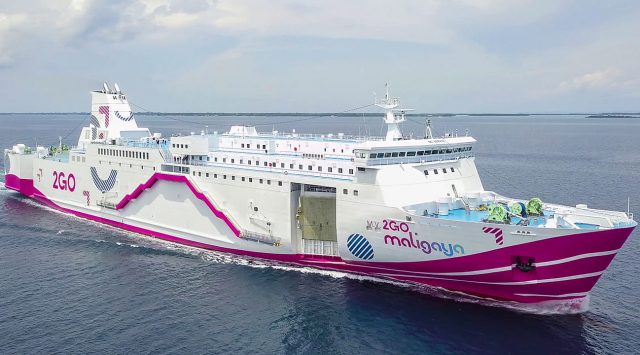IT HAS been over a year since audiences have been able to laugh and cry in a movie theater, or sing along with their favorite band in a concert. While the creative sector in the country has managed to transfer activities and events online, it still cannot operate as vigorously as before.
When most of the creative sector stopped operations last year, the indefinite lockdowns led to job losses amongst creative freelancers and workers, artists, and performers.
The National Live Events Coalition PH, a movement of professionals and organizations from the live and social events industry reported a revenue loss of more than P133 billion, affecting more than 400,000 jobs.
According to ilostmygig.ph, a website that collects data on the impact of the COVID-19 pandemic on the country’s arts, culture, independent businesses, and creative industries, its survey recorded a total loss of income of more than P268 million, impacting 4,458 professionals during the strict lockdowns in 2020.
HB10107
This is the situation that backgrounds House Bill (HB) 10107 or the Philippine Creative Industries Development Act, a measure aimed at supporting the creative sector. It was submitted by the House Committees on the Creative Industry and Performing Arts, Appropriations, and Ways and Means on Aug. 30 this year, substituting for House Bill Nos. 4692, 6476, and 8101.
It was passed on the second reading on Sept. 13 and approved for third and final reading on Sept. 20.
The measure seeks to promote and develop creative industries, and allocated funding for them. It also aims to protect and strengthen the rights of, and cultivate economic activity of, creative firms and individuals, works and creative industry stakeholders as well as indigenous cultural communities.
“Creative successes of Filipinos, to date, have almost always been hinged on the artists’ own individual efforts, i.e., with very little to no government support which is why we believe that Filipino creatives, while already competitive, have yet to harness the full potential of their creativity,” Pangasinan 4th District Rep. Christopher “Toff” de Venecia said in an e-mail to BusinessWorld. He is the House Committee on Creative Industry and Performing Arts Chairperson.
Mr. De Venecia added that among creative stakeholders’ concerns that were considered in drafting the measure include the absence of a “singular government agency that caters to their needs,” the “lack of a legal definition of the creative sector” which led to difficulties for creative professionals in identifying which sector they belong to when applying for bank loans, registering with the Bureau of Internal Revenue, or obtaining health insurance.
One of the major points of the bill is the creation of the Philippine Creative Industry Development Council which will be attached to the Department of Trade and Industry (DTI). The Council will be composed of 17 members — nine regular members from the private sector who will represent each creative industry domain, and eight ex officio members from government agencies.
“Although we are seeing great developments in this area, there are still gaps between how private sector leaders approach issues relating to the creative industries versus how government officials treat the same. There needs to be a mindset shift about how the government views the creative economy, and we believe that this can start to happen if we put representatives from the government on the same decision-making table as the private sector,” said Mr. De Venecia.
The Philippine Creative Industry Development Council will be a Creative Workers’ Welfare Committee. The bill also makes provisions for a Creative Educational Plan, and The Creative Industry Development Fund for research.
CONCERNS
While the House Bill promotes the development of the creative industry, the organization Concerned Artists of the Philippines (CAP) has expressed concerns on how the bill defines provisions on creatives labor welfare, support for MSMEs, educational support, and grassroots participation.
“Any industry in society cannot be healthy or sustainable if its workers are underpaid, overworked, working in unsafe conditions, have little access to health care and insurance, or fear to exercise their political and civil rights for self-organization. This definitely applies to the creative industry too,” said Lisa Ito, University of the Philippines-Diliman College of Fine Arts faculty member and CAP Secretary-General, in an e-mail to BusinessWorld.
“Any industry is ultimately built on the backs and labor of workers. Any effort therefore to develop the industry will have to address these questions of how it will change and improve the lives of people on the ground who comprise the labor of the creative industries,” Ms. Ito added.
After conducting study groups and consultations with their network, CAP wrote a position paper and addressed its concerns directly to Rep. Sarah Elago of the youth sectoral partylist Kabataan Partylist and the rest of the Makabayan bloc in Congress, and to the office of Mr. De Venecia.
“Both the proponent and the Makabayan bloc representatives made an effort to listen to our position and address what could be revised at that point in the bill’s progress in the House. Of course, these are still not enough to fully address the concerns raised in the paper, but it is a start,” Ms. Ito said.
Ms. Ito commented that the creation of a Creative Workers’ Welfare Committee is “a positive development” and suggested that the Committee “provide support and foster a climate conducive for the growth of creative organizations.
“The committee should be open to consultations, proactively initiate programs to study and improve welfare and uphold socio-economic and political rights, and not allow violations such as the red-tagging of individual artists and cultural organizations, especially community-based formations, to happen,” she said.
CURRENT STATUS AND OUTLOOK
If the Bill is passed into law, one of its long-term goals is to establish the Philippines as the leading creative economy in ASEAN by 2030.
“I think that we can properly plan and lay the foundation for this creative future, and this shall be one of the primary tasks of the Council,” Mr. De Venecia said, admitting that it is a “lofty goal.”
“A Creative Industries Development Plan shall be created, which shall contain targets as to value creation, contribution to GDP (gross domestic product), jobs created, intellectual property targets, market creation and expansion (whether domestic or international), and investment targets,” said Mr. De Venecia. “It follows that these predetermined targets will influence how government programs for the creative industries will be streamlined.
“While targets can be adjusted along the way, the point is that we cannot really get to a goal without planning for it ahead of time. We cannot grow what we don’t know.”
Ms. Ito stressed the importance asking, “For whom is development for?”
“The experience of growth in other countries and investment in the Philippine landscape, throughout history, has taught us that profit does not necessarily equate to progress, or development for the people,” Ms. Ito said.
“We must not forget that our creative industries can shape our country’s history and change the lives of communities for better or for worse, so let us always be vigilant towards the ends and means of development,” she added.
The committee is hopeful that the Senate will approve the House Bill before the year ends.
If the measure is approved, Mr. De Venecia explained, “There will have to be bicameral committee meetings where the versions of the lower house and the senate will be reconciled if there will be conflicting or differing provisions.” After which, it will be submitted to the President for his signature and approval.
“We are confident that the [HB10107] will become law before the next set of officials are elected,” he said. — Michelle Anne P. Soliman













